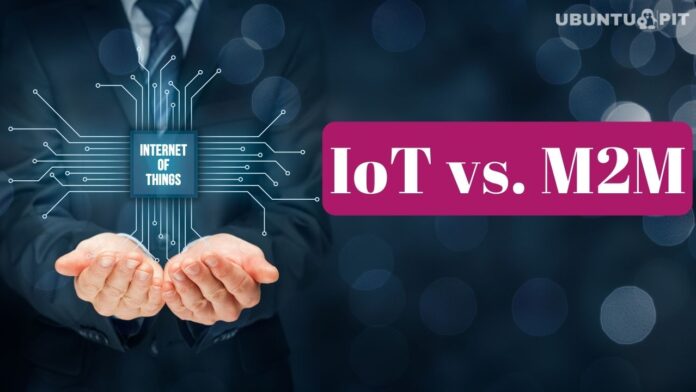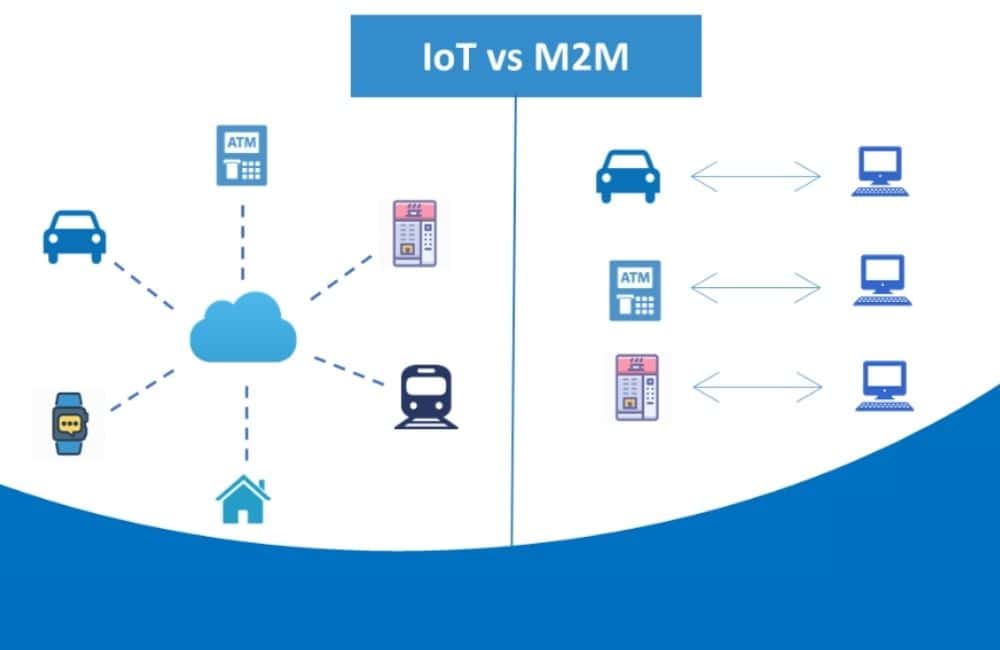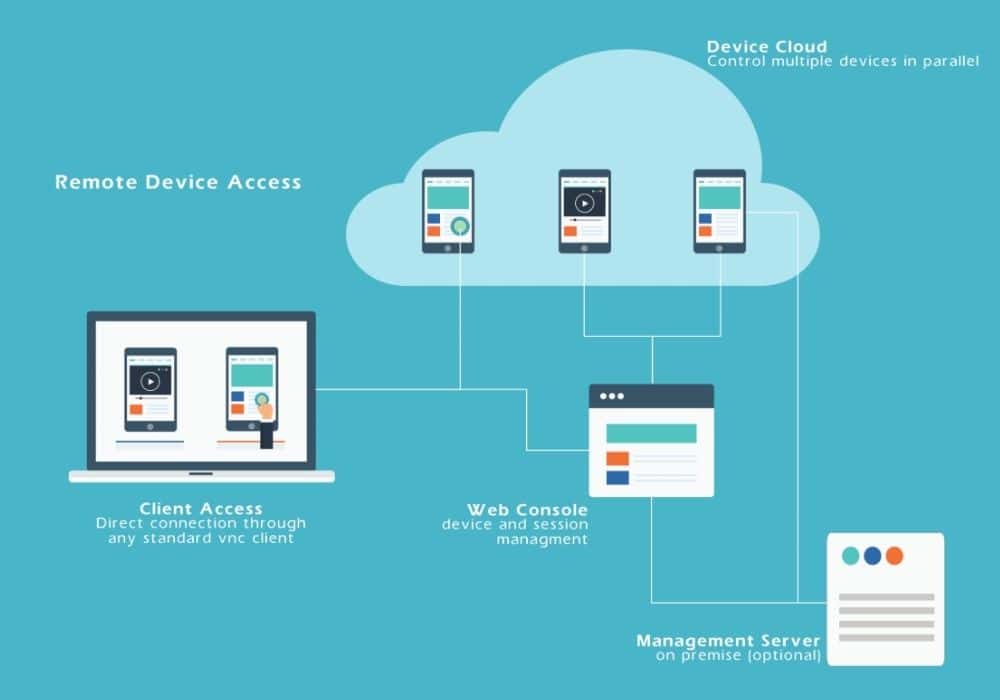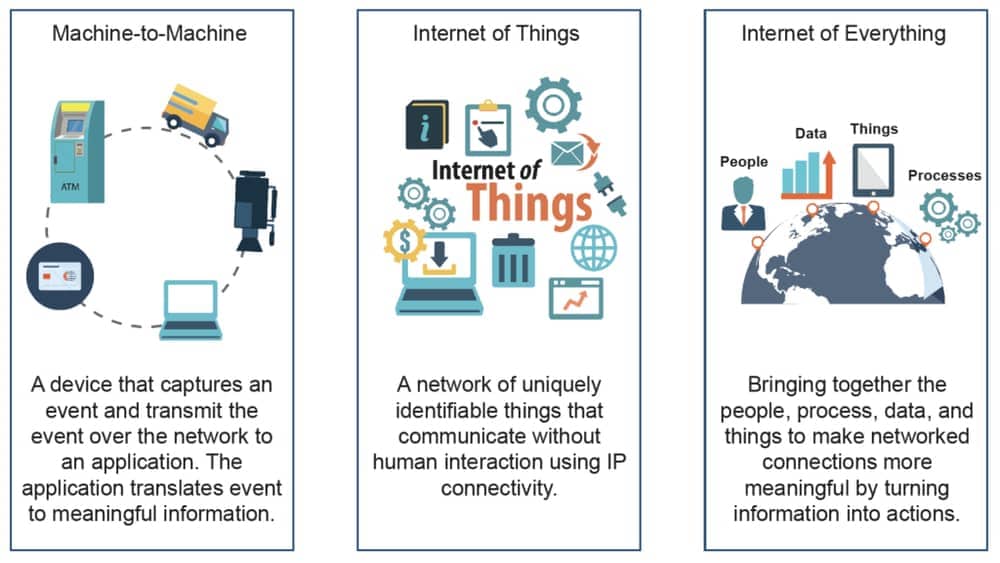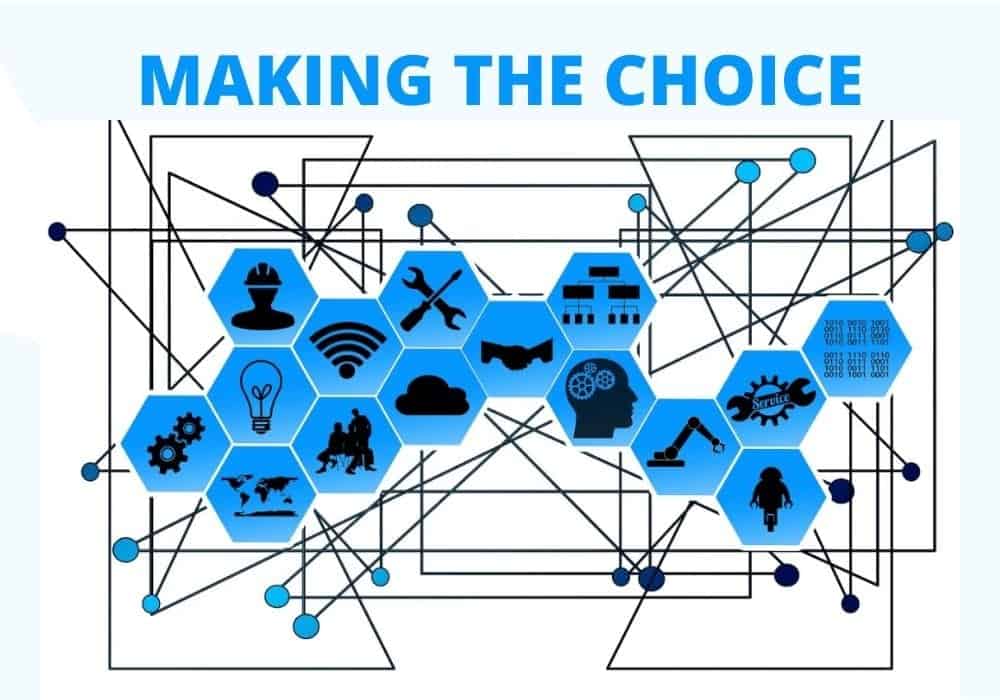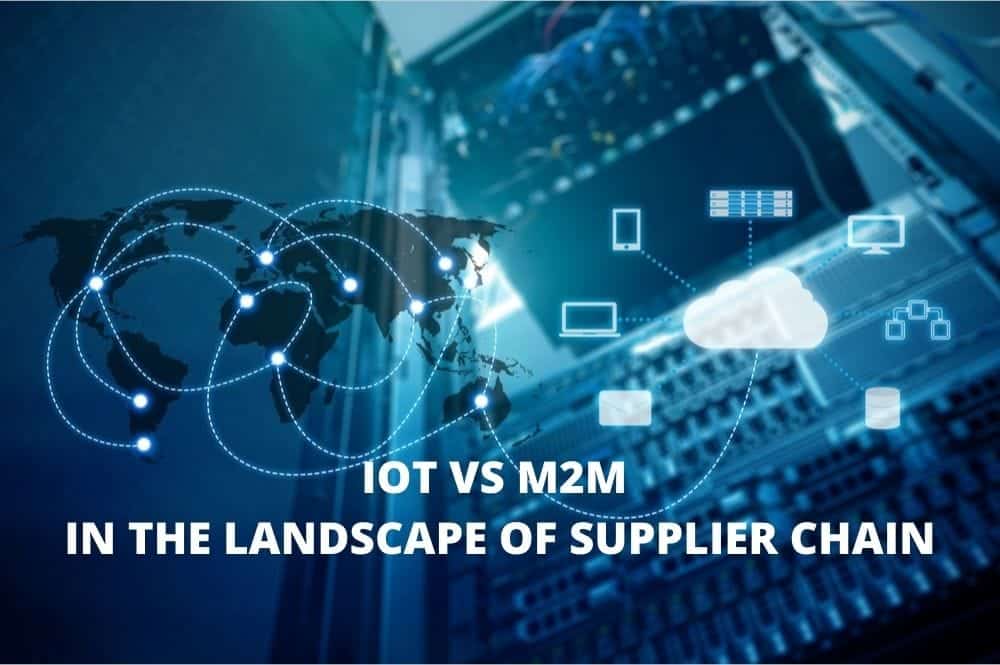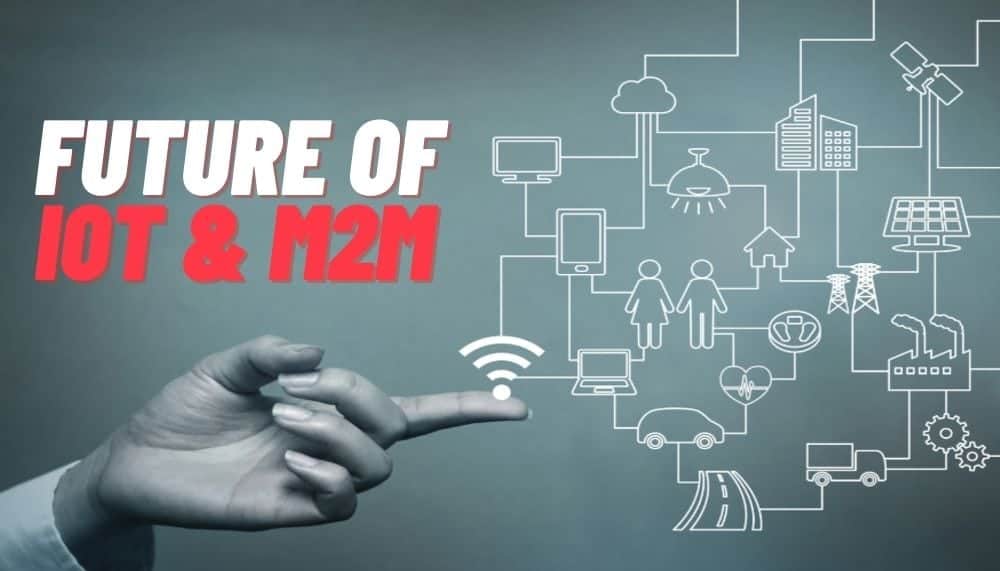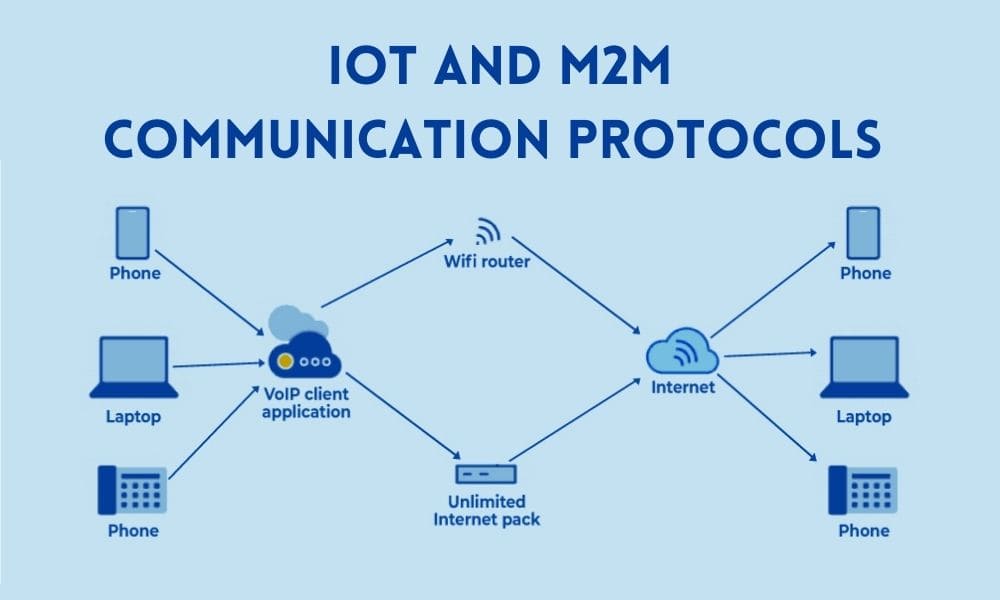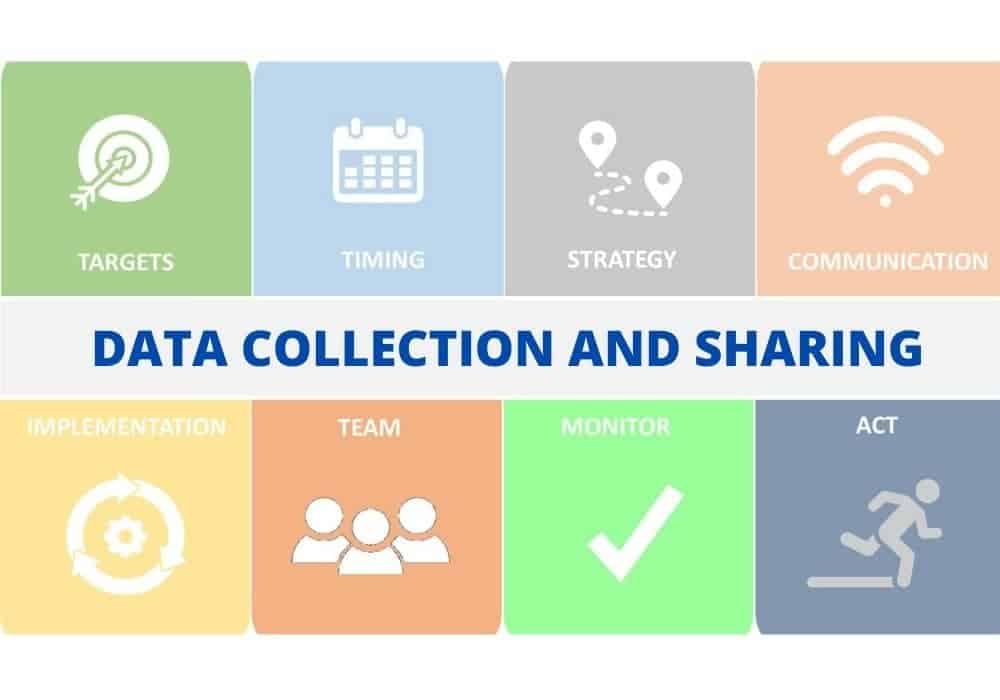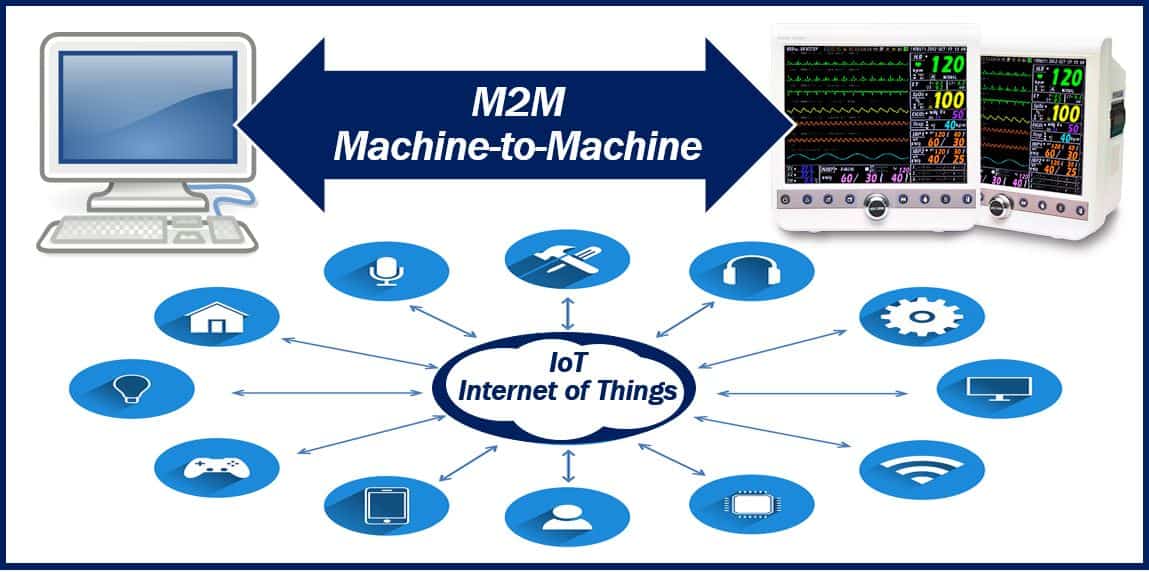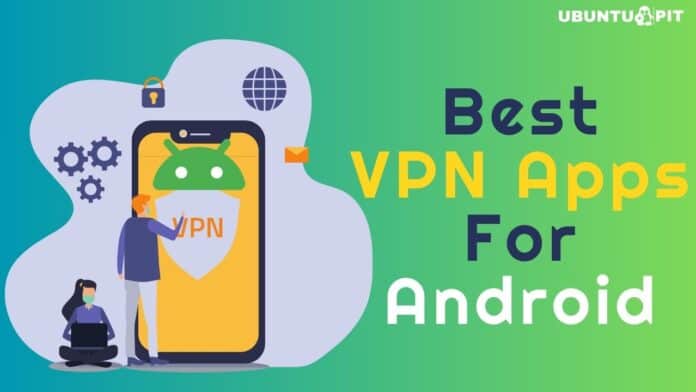Machine to Machine and Internet of Things, commonly known as IoT and M2M, are two of the most common names in the world of technology. Nevertheless, many people often become confused when they are asked to talk about IoT vs. M2M. If you are one of them, you will be happy as we will bring light to this topic and try to answer all the questions you have in your mind.
Also, if you are a fresh CS graduate or working as an IT professional, then you are at the right place, as it is one of the frequently asked IT interview questions. I believe this article will enable you to identify the important insights and differentiate the IoT and M2M in a better way.
What Do You Mean By IoT and M2M?
We will discuss the IoT vs. M2M depending on their basic principles, applications, and architecture. But before proceeding to discuss the differences, we will need to have the basic knowledge for better understanding.
IoT is a network of physical devices where we embed sensors, electronics, or software to communicate and exchange data. So, it is more about cyber-based physical systems and the Internet.
On the other hand, M2M stands for direct communication between wired or wireless channels. Even in M2M, we can create intelligent networking by connecting devices like sensors, actuators, or embedded systems.
These devices can share data and interact with each other. However, both IoT and M2M deal with data sharing and communication, making it more complicated for most people to have a unique approach.
Key Concepts of IoT vs M2M
Without grasping the core concepts of IoT vs. M2M, you can never specify the right solution for your needs. It has even become the continuing subject of discourse in the tech world. Although both these are expanding at a break-neck speed, many people still think M2M and IoT are the same.
You can consider them as connectivity solutions. However, there are significant differences between them, especially regarding remote device access. So, without spending any more time, let’s distinguish IoT and M2M depending on the major applications, connection type, value chain, sharing of collected data, etc.
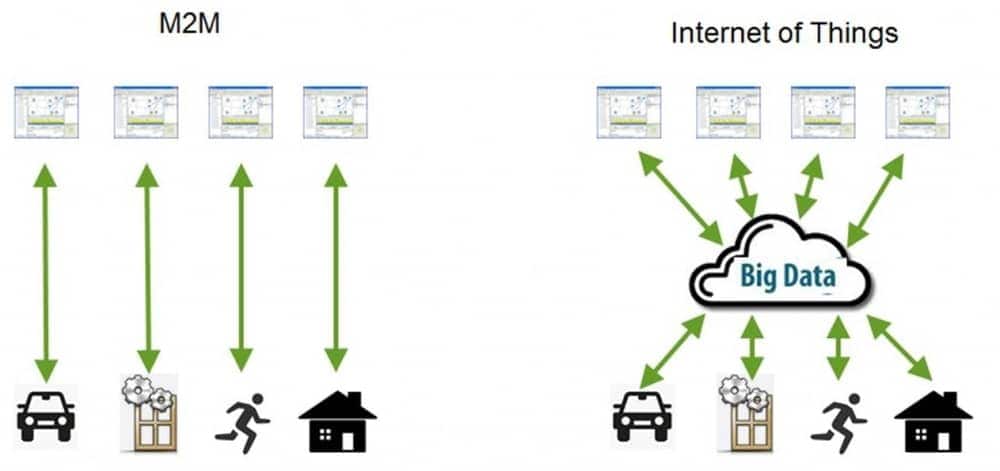
1. Remote Device Access
Remote access is the most important factor that we must consider while discussing the potential of IoT vs M2M. This is because they render the same value proposition with Remote devices and other entities like machines and assets.
However, there are significant differences that separate IoT and M2M. While M2M. M2M comprises more hardware modules where cellular or wired networks are used to support dedicated software.
It helps organizations reduce operational costs and provide better service through remote support, troubleshooting, etc. IoT uses the same devices with low power. IoT can also support inexpensive passive sensors that might not be justified for an M2M hardware module.
With the IoT, enterprises can improve the quality of the existing processes and introduce fresh business models like product-as-a-service. But unlike M2M, any sanctioned enterprise can access IoT data anytime.
2. Connectivity
From the abbreviation of M2M and IoT, Machine to Machine, and Internet of Things, we can easily understand how they connect and exchange data between devices. However, applications must get device data throughout the enterprise if you consider enabling performance improvements.
Here, IoT delivers a significant advantage over the M2M network because of its scalability and cost-effective solutions. However, you can also count on the possibilities and business innovation to bring light to IoT vs. M2M.
IoT takes advantage of cloud-based infrastructure to facilitate decentralized applications and minimize the operation cost in the long run. However, while IoT completely depends on the Internet, M2M has to employ direct point-to-point communication for transferring data from one device to another.
So if you do not want to take the hassle of incremental hard-wired connections and SIM card installations for your enterprise, IoT can play the role of a universal enabler.
3. Making The Choice: IoT vs. M2M
You should clearly know what you require and how you want to achieve it before making your call between IoT and M2M. Understanding the device communications technology can also play a valuable role when making a choice.
M2M technology is the best fit for a limited number of physical machines and rapid and trusted communication. On the contrary, you will need to depend on a fast and reliable Wi-Fi connection to get the advantages of IoT solutions.
There are many sectors and industries where real-time syncing is important for maintaining continuous operation. So, obviously, IoT would be a great fit if you automatically sync data across multiple devices.
But again, for an M2M, infrastructure services will not be restricted without an internet connection. However, picking the right technologies should be your primary concern. They can speed up the growth of your business to a great extent.
4. Exceptions in Supplier Landscape
If you have followed this article up to this part, you probably understand the core differences between the M2M and IoT technologies. Furthermore, if you look at the supplier landscape, you will surely understand the major exceptions to having a different approach toward IoT and M2M.
They are going to develop rapidly to complement each other to enhance their functionalities. But, again, suppliers come with different competencies to enable users to generate values and opportunities from the remote access solution.
Many people consider M2M as plumbing, but IoT can render universal solutions to facilitate scalability. Although M2M comprises embedded hardware and telecommunication networks, more and more companies are trying to incorporate IoT capabilities.
On the other hand, IoT suppliers are focusing on software and enterprise-level integrations. So, you can clearly understand that internal development, acquisition, or partnering with IoT suppliers will play a crucial role in minimizing the gap between IoT and M2M in the coming years.
5. Scope in the Future
This is another important point you should consider to understand IoT vs. M2M in a broader sense. When we are talking about the future of technologies, IoT should definitely come first compared to M2M. This is because IoT has become the most common name in this industry.
Starting from home, small and even large enterprises can benefit from the IoT solutions nowadays, which clearly authenticate its bright future scope.
Besides wearable devices, smart sensors and applications have taken the IoT possibilities to the next stage. As a result, IoT is also contributing to the health sector, traffic monitoring, agriculture, hospitality, and the automotive industry as well.
In contrast, the expansion of M2M technology will largely depend on how it advances in the next few years. Incorporating IoT with M2M is still a new concept for most M2M manufacturers. But it will surely play a decisive role for any M2M company in sustaining itself in the competitive market.
However, M2M will significantly impact the health sector and consumer industry. It will create many employment opportunities as well. Services like indoor environment monitoring will also see the light of hope with the advancement of M2M in the coming days.
6. Used Communication Protocol
To understand the underlying differences between the IoT and M2M technology, you will have to know about the communication protocols clearly. Communication protocol refers to a set of rules that allows two entities to transmit or receive information within a network.
Usually, hardware and software are used to implement a protocol. However, IoT solely depends on the internet to complete any operation where various internet protocols such as FTP, Telnet, and HTTP are used to exchange data between devices.
M2M also depends on various network technologies to share data between physical devices. The number of protocols that M2M uses surpasses the IoT protocols for a local M2M network, and we can use any of the ZigBee, Bluetooth, ModBus, M-Bus, Wireless M-Bus, Power Line Communication (PLC), 6LoWPAN, and IEEE 802.15. 4.
Community protocols are important for analog and digital communication. Even in an organization, protocols can help minimize communication gaps and enable employees to remain aligned with the company’s key strategic priorities.
7. Data Collection and Sharing
Data sharing is one of the most important factors we must consider when discussing IoT vs. M2M. In both technologies, certain steps are required to transmit or receive data. A typical IoT network is a combination of sensors/devices that can connect with the cloud.
After storing data in the cloud, any authorized device can access it and use it for different purposes after processing. In addition, certain software platforms can make the collected data usable and more effective.
IoT makes the data or information easily available to all the sanctioned hosts. Moreover, each host will get notified in real-time if there is any change. However, within an M2M area network, no M2M node can communicate with any external node due to the absence of IP-based protocols.
To exchange data with the external network, M2M uses gateways. Therefore, M2M data is collected only through point solutions and on-premise storage. In contrast, we can exchange data between public, private, or hybrid clouds using the IoT infrastructure.
8. Machines in IoT vs. M2M
In this part of the article, we are going to discuss the architecture of IoT and M2M. M2M is suitable for people who want to share a limited amount of data between machines. Smoke detectors, door locks, alarms, water meters, agricultural sensors, smart buildings, smart lighting, and even environmental sensors can become an integral part of an M2M network.
But to be more specific about M2M network architectures, we can mention Cellular, WiFi, Bluetooth Low Energy, ZigBee, SIGFOX, LoRaWAN, and Symphony Link.
On the other hand, IoT comprises a four-stage process, starting from data collection to data processing. After collecting data from the attached sensors, IoT stores data in a corporate data center or cloud. Then, the data is processed and analyzed before initiating predefined actions.
The user interface is also a major part of the IoT environment. However, IoT architecture is designed to continuously render services over the networks and leverage them automatically to meet future demand.
9. Major Applications
IoT has seen huge growth, especially during the challenging time of the coronavirus pandemic. It has enabled us to overcome difficulties with the help of smart devices and applications. Therefore, we can expect to experience a huge change in the existing work processes due to the easy incorporation of IoT.
As a result, starting from agriculture, home automation, manufacturing, education, transportation, retail, health care, and even the supply chain industry have already seen the impact of IoT integrations, which are expected to grow in the coming years.
However, incorporating M2M technologies is not as simple as incorporating IoT into an existing system. M2M is one of the fastest-growing types of connected device technologies. It is often inappropriate for most companies due to the high hardware cost.
M2M can offer many services like IoT. But if you only consider the major use cases, then manufacturing, home appliances, health care device management, and smart utility management will surely come to the list.
10. IoT and M2M Advantages
We are going to conclude our discussion on IoT vs. M2M with the advantages we can extract from these technologies. If you have followed this article up to now, you may already understand that IoT comes with a higher order of benefits than M2M.
Besides, enterprise integration and the ability to accommodate a wide variety of devices provide IoT with the required competitive edge to outperform M2M.
Although both IoT and M2M can face unplanned downtime, IoT can check the issues at a system and machine level. Besides, unlike M2M, IoT can help analytics to facilitate big data for creating values and new opportunities.
Again, the dependency on software is much more reliable compared to the hardware dependency. M2M systems are less accessible than IoT, where both internal and external customers can enjoy the convenience.
IoT solutions are also preferable for increased visibility across global networks. As a result, IoT systems and solutions can also flourish at the C level, while M2M solutions can only be developed at the departmental level.
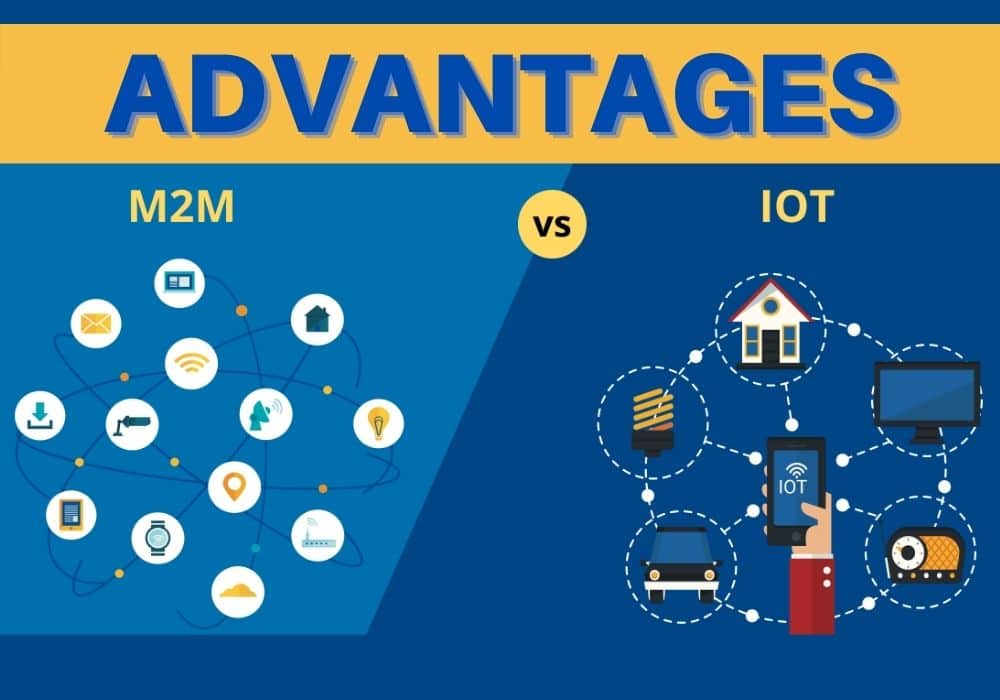
Finally, Insights
M2M and IoT have become synonymous in numerous sectors. But to specify a solution for meeting your anticipated needs, you must carefully understand the difference between these technologies.
That’s what motivated me to talk about IoT vs. M2M. I have highlighted the importance, role, effectivity, applications, connectivity, and architecture to differentiate these two distinct technologies.
IoT will grow much faster than M2M due to enterprise integration capabilities and scalability. In addition, there are a number of cost-effective solutions and reliable services that will directly contribute to the expansion of IoT in the coming years.
On the other hand, M2M suppliers are going to enter the new terrace of IoT incorporation. It will definitely create new opportunities and add value to the existing devices and solutions.
I believe this article will eradicate all the confusion that you have on your mind about IoT and M2M. You will also draw a line to distinguish between IoT and M2M communication systems and specify the best fit to meet your goal.
